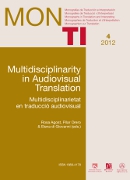Casting the light on cinema – how luminance and contrast patterns create meaning
Main Article Content
Abstract
Downloads
Article Details
The documents contained in these directories are included by the contributing authors as a means to ensure timely dissemination of scholarly and technical work on a non-commercial basis. It is understood that all persons copying this information will adhere to the terms and constraints invoked by each author's copyright. These works may not be reposted without the explicit permission of the copyright holder.
References
Anderson, Joseph D.; Barbara Fisher Anderson & David Bordwell (eds.) (2005) Moving image theory. Ecological considerations. Carbondale: Southern Illinois University Press.
Arijon, Daniel. (2010) Gramatyka języka filmowego. Translated by Feliks Forbert-Kaniewski. Warszawa: Wydawnictwo Wojciech Marzec.
Bordwell, David & Kristin Thompson. (1990) Film art: an introduction. 3rd ed. New York: McGraw-Hill Publishing Company.
Brill, Lesley. (2006) Crowds, power, and transformation in cinema. Detroit, Michigan: Wayne State University Press.
Brown, Blain. (1996) Motion picture and video lighting. Burlington, MA: Butterworth– Heinemann.
Campbell, Drew. (2004) Technical theatre for nontechnical people. New York: Allworth Press.
de Fez, Desirée. (2007) Películas clave del cine de terror moderno. Barcelona: Ediciones Robinbook.
Dyer, Richard. (1997) White. London: Routledge.
Fellini, Federico & Giovanni Grazzini (eds.) (1988) Comments on film. Translated by Joseph Henry. Fresno: California State University.
Fix, Ula & Morgner Henrike. (2005) “Narration in Hörfilm – Theorie und Analyse”. In: Fix, Ula (ed.) (2005) Hörfilm. Bildkompensation durch Sprache. Berlin: Erich Schmidt Verlag.
Geuens, Jean-Pierre. (2000) Film production theory. Albany: State University of New York Press.
Gutiérrez San Miguel, Begoña. (2002) “La luz como elemento expresivo de la narrativa audiovisual”. Revista Comunicar 18: Descubrir los medios. p. 101.
Malkiewicz, Kris. (1986) Film lighting. Talks with Hollywood’s cinematographers and gaffers. New York: Fireside.
Millerson, Gerald. (1991) Lighting for Video. 3rd ed. Oxford: Focal Press.
Mital, Parag K.; Tim J. Smith; Robin L. Hill & John M. Henderson. (2011) “Clustering of gaze during dynamic scene viewing is predicted by motion”. Cognitive Computation 3:1. pp.5-24. Full-text version at: http://www.springerlink.com/content/u56646v1542m823t/fulltext.pdf
Monaco, James. (2009) How to read a film. Movies, media and beyond. 4th ed. New York: Oxford University Press.
Musburger, Robert B. & Gorham Kindem. (2009) Introduction to media production. The path to digital media production. Oxford: Elsevier Inc.
Nelmes, Jill. (2003) An introduction to film studies. 3rd ed. London: Routledge.
Oppenheimer, Jean. (2010) “An emotional transformation in Peru”. American Cinematographer 91:9. p. 33.
Orero, Pilar. (2008) “Three different receptions of the same film”. European Journal of English Studies 12:2. pp. 179-193.
Orero, Pilar. (2012) “Film Reading for Writing Audio Descriptions: A Word is Worth a Thousand Images?” In: Perego, Elisa (ed.) 2012. Emerging topics in translation: audio description. Trieste: ETU. pp. 13-28.
Ostaszewski, Jacek. (1999) Film i poznanie: wprowadzenie do kognitywnej teorii filmu. Gdańsk: Wydawnictwo Uniwersytetu Jagiellońskiego.
Revault d’Allonnes, Fabrice. (2003) La luz en el cine. Madrid: Cátedra. Rockett, Will H. (1988) Devouring whirlwind. Terror and transcendence in the cinema of cruelty. Connecticut: Greenwood Press, Inc.
Sipos, Thomas M. (2010) Horror film aesthetics. Creating the visual language of fear. North Carolina: McFarland.
Solso, Robert L. (1994) Cognition and the Visual Arts. Cambridge, Massachusetts: MIT Press.
Stafford, Roy. (2007) Understanding audiences and the film industry. London: British Film Institute.
Sturken, Marita & Lisa Cartwright. (2001) Practices of looking. An introduction into visual culture. New York: Oxford University Press.


